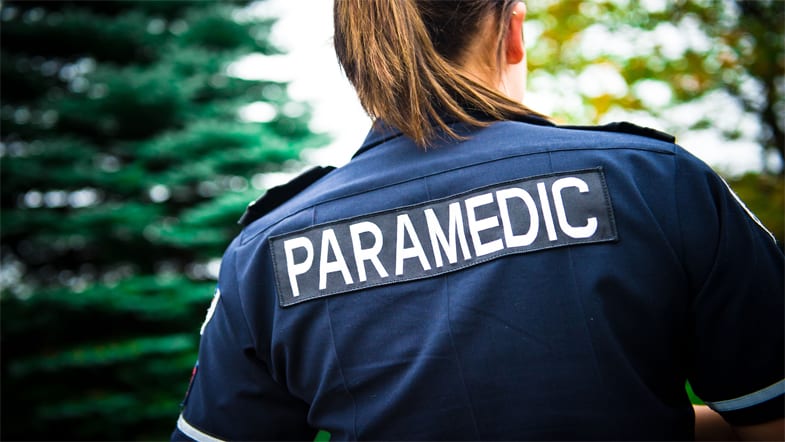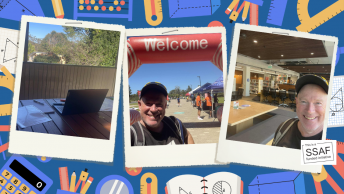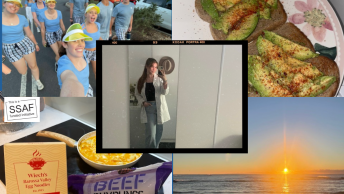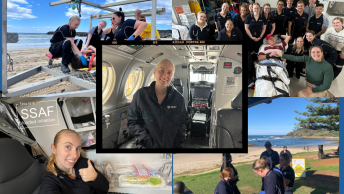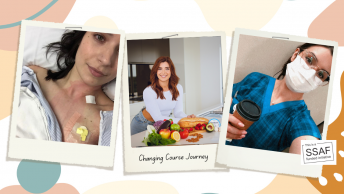This post is over three years old, the information may be outdated.
By Ellie Parker
Third year CSU paramedic students Paige Woods and Elle Wrigley are about to embark on the journey of a lifetime… working for the London Ambulance Service in 2015! They’ve taken some time out to tell about their experience so far and what prac is like!
– Why did you want to be a paramedic?
P: I chose to be a paramedic for two main reasons. The first being that the workplace environment is forever changing and the constant research in this field means we will always be updating our practices to give the patients the very best care. The second reason is that I have the chance to make that person’s day, and to me that is all I want to do for the rest of my life.
E: The thought of sitting in an office day in, day out, has never appealed to me. The opportunity to be a paramedic allows me to be outside doing something active as well as providing a beneficial service to the community. There is never the same day twice and each job provides a different challenge. Being a paramedic is a hard but rewarding job with the opportunity to always learn new sills and improve within yourself. Working in a team and within the local community is very appealing to me
– Did you get a choice where you did prac and, if yes, why did you choose where you went?
E:We were given certain zones we could choose from which included a range of stations such as Sydney West or Central Coast zone. We also had the opportunity to apply for regional stations such as Broken Hill, Dubbo or Taree. We then had to choose three of these for our preferences and the Ambulance service placed us in one of these (sometimes).
P: Yes, my first preference this time was the rural station in Wagga Wagga and I was lucky enough to get it. I chose to go to a rural station this time around as last time I was stationed at the Sydney Ambulance Station and wanted to compare the two of them. I also chose Wagga Wagga as I am from a rural area and I wanted to go to a station I may be able to choose to work in more permanently later on in life. I also heard great things about the crews at the Wagga Wagga Ambulance Station and they were right.
– How long was prac for and what was your favourite thing about it?
P: Prac was for 154 hours in four weeks; our roster included four shifts of a minimum of 12 hours. My roster included two day shifts from 7am to 7pm, an afternoon shift 11am to 11pm and an evening shift 7pm to 7am. We then had five days off, in which we had to complete assignments, and job applications were also due at the same time so our five days went very quickly. We also needed to do further research into what we had been involved in during our four shifts.
I am on track to graduate this coming December. The best thing about prac was the fact that I was able to finally feel like a paramedic. I was able to put into practice everything I have learnt over the past three years and learn from an individual who has been in the service for the past 35 years. The greatest thing about prac is the exposure we get into the life of the paramedic.
E: Being a third year student I felt I was more confident in my patient assessment and treatment skills. I really enjoyed been able to bring my past three years of education together and treat real patients instead of a mannequin. I also enjoyed working in Western Sydney with a large range of medical and trauma cases and also a range of patients from different cultures. The atmosphere within the ambulance, ambulance stations and hospitals is always fun, positive and enjoyable. I enjoyed working with my preceptor and her partners and was able to learn from their experiences and guidance.
– What were the hardest/worst things about prac?
P: The hardest part of prac is that we could always do more. So we put so much pressure on ourselves to do well that we make silly mistakes. I really didn’t want to let my preceptor down, and for that reason I struggled with cannulation. After speaking to others I know that I am not the only one, and this at times can be so hard especially when we are so tired and exhausted.
E: Shift work and long hours is always a challenge, however I found the worst thing about prac was dealing with patients that didn’t need an ambulance. In my opinion the majority of patients we are called to and transferred to are not in an emergency situation and don’t require an ambulance – or sometimes even hospitalization. I also dealt with quite a lot of death on prac which is a common occurrence, however was my first experience and found it a little confronting.
– What is the one life lesson you learnt from prac?
E: Clinically I learnt to always back yourself and remain calm under pressure in any situation. During my first cardiac arrest drill I was very nervous and all over the place however I followed the guidance and the relaxed, professional nature of my team members and was able to perform better.
P: The life lessons I took from prac is that I am a lucky individual and I have a lot when compared to others. I have a loving family and a roof over the top of my head and for others this isn’t available. I also learnt that sometimes you just need to get up and keep going, it’s always the way when you are exhausted and have 10 minutes to go in a 12 hour shift you get a call and you have to give that person the very best service you can. It’s not the patient’s fault that you are tired and that is something that you need to remember all the time.
– What are your plans for next year?
P: I have been accepted into the London ambulance service with an estimated start time in March next year. I am so excited for this opportunity.
E: I have a job with the London Ambulance Service and plan to move there with a few other CSU students in early 2015!


